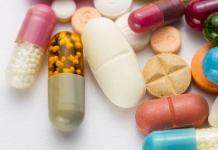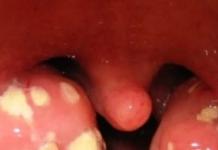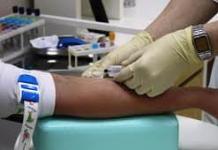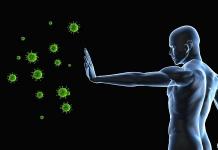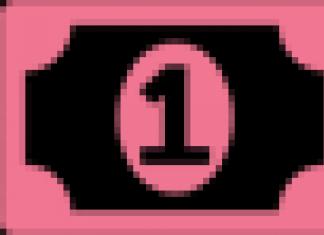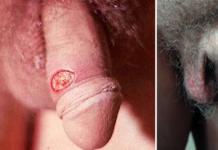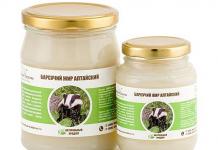Breastfeeding is a very popular topic today, because the Soviet practice of breastfeeding is now actively criticized, and completely different principles and approaches are proposed instead. But this is the biggest difficulty: there are a lot of recommendations on how to properly breastfeed and how to optimally organize the lactation process. Often times, pediatricians and breastfeeding counselors offer dramatically different approaches to feeding babies.
So, for example, there is still no consensus on whether to express breast milk. But if you have done this at least once, you might have noticed that the milk looks rather "poor": gray, transparent, almost blue, like water. And of course, in this case, the question of how you can increase the fat content will certainly visit your mother. breast milk.
Conversations about the amount and fat content of mother's milk start even if the baby is not gaining weight or very often begins to demand breast. Today we will talk about how the fat content of mother's milk is related to the well-being of children's health, as well as whether it is necessary and possible to somehow influence the nutritional value of this product.
On this issue, as in others related to breastfeeding, there is no unity either among specialists or among nursing mothers. The practice of checking the fat content of breast milk and trying to increase it comes from the past. And many pediatricians today consider it outdated and incorrect.
Modern breastfeeding experts assure that a woman's breast milk is always ideally suited to the needs of her baby. If the mother does not eat well, if her diet is unbalanced or if the body lacks certain nutrients, then the milk still contains everything necessary for the baby, with the only difference that it is produced due to the mother's health, and not due to the correct varied nutrition
And there is no way to improve the quality, in particular the fat content, of breast milk, and there is no point - its composition and nutritional value are programmed at the genetic level. The experience of many mothers confirms the veracity of this judgment: no matter what they eat, the baby does not get better from it.
On average, breast milk in all nursing mothers has a fat content of 4-4.5%. Even if someone manages to artificially increase it, it will not be useful for the child at all: fatty milk is more difficult to digest and less absorbed, the newborn does not yet produce enough enzymes necessary to process such heavy food. As a result, the baby's digestion and defecation process is disrupted: colic, flatulence, abdominal pain, constipation, dysbiosis and other health problems occur. Plus, it's much more difficult to suck on fatty milk! Scientists also believe that if the fat content of the mother's milk is higher than that necessary for the child, he will still "take" the percentage he needs, and the excess calories will be absorbed by the mother's body.
It is noteworthy that breast milk always meets the needs of a nursing baby at a particular age period. As the baby's digestive tract matures, grows, develops and "matures", breast milk also changes. Moreover, its composition and fat content differ not only at a certain age stage (colostrum comes first, then it is replaced by the so-called transitional milk, and only later mature milk begins to be produced), but also on different days, time of day, and even during one feeding. So, breast milk is conditionally divided into front and back milk. The front milk serves as a drink for the child and consists of 87% or more water, and the back milk is the most valuable and nutritious. It is with him that the baby is saturated, and weight gain depends on him. Therefore, if your baby is not gaining weight well while breastfeeding, then you need to think about how to properly establish the lactation process, and not about how you can increase the fat content of milk.
The problem is actually solved very simply, you just need to use the services of a breastfeeding consultant. Do not spare the money for such a consultation - it will be worth it. Save better on something else. But the specialist will show you how to properly attach the baby to the breast, what various comfortable positions are for this, how to understand that the baby is eating up, and, in general, how to properly breastfeed the baby.
If it seems to you that your milk is low-fat or the baby is hungry, then first of all it is necessary to increase the frequency and duration of attachments and ALWAYS “feed” the breast to the end. With frequent breast changes, the baby does not "get" to nutritious, satisfying hind milk - and will not gain weight, remaining hungry. In order for the baby to gorge himself, he must suck on one breast for at least 20-25 minutes, because only after 10-15 minutes of active sucking, the same back milk begins to flow to him.
You should not be afraid that the baby begs for breast very often. Firstly, he really has a colossal need for it, because all his difficulties and problems (discomfort, resentment, pain or feeling unwell, cold, fatigue, desire to sleep, fear, etc., etc.) the baby is able to solve only in this way.
Breast sucking is not limited to satisfying hunger or thirst alone. Secondly, all breastfeeding mothers experience the so-called lactation crises - periods when breast milk is not enough. But these periods are very short-lived, and there is only one way to overcome the crisis: more often to put the baby to the breast. It is as a result of lactation crises that many mothers lose milk due to improper actions, in particular, the introduction of supplementary feeding.

In principle, already at this point, the question of what you need to eat for the fat content of breast milk, you should not have. And as a conviction, we will cite another argument of modern specialists: an increase in the calorie content of the diet leads to the formation of overweight breastfeeding woman, but the quality of breast milk does not improve!
Counselors generally discourage nursing mothers from using calories. The main thing, they think, is to balance your diet and eat healthy food - then both mom and her baby will be good and comfortable.
We are talking about fractional reusable meals, which should consist of complex carbohydrates, healthy fats (preferably vegetable) and lean proteins, and exclude potentially dangerous foods: gas-forming, allergenic, synthetic.
But any of the readers has the right to disagree with the point of view provided in the article. If the experience of grandmothers is more authoritative for you, and you still want to know how to increase the fat content of breast milk at home, then you can certainly try to do this, but you must understand that the responsibility for all the consequences rests entirely with you.
- Condensed milk.
- Tea with milk.
- Seeds.
- Nuts.
- Infusion of nuts in milk (2 tablespoons of walnuts are infused in a glass of boiling milk - the infusion should be drunk in 3 divided doses).
- Butter.
- Hard cheeses with a high percentage of fat.
- Homemade cottage cheese.
- Meat (beef is better).
- Liver.
- Wine "Cahors" (1 tablespoon per day).
Also, many advise to express a little the front milk, so that the child immediately proceeds to the back. But we do not recommend doing this.
It should also be said separately about drinking. There is an opinion that drinking plenty of water "dilutes" breast milk, reducing the percentage of its fat content. It's a delusion. Experts advise the mother to drink as much as her body requires - deliberately not limiting herself, but not forcing (if there are no problems with lactation). The best for this is, of course, raw purified water, as well as teas and decoctions. Rosehip, chamomile, fennel will be useful for mom and baby. But unwanted individual reactions are possible anyway!
But with milk, especially with fatty, you should be careful: try drinking it, starting with small portions, and at first it is better in a diluted form.

How to check the fat content of breast milk
Very often, all these contrived problems with fat content begin with pumping. Mom discovers that her milk is translucent, draws conclusions about its low calorie content and nutritional value, and a modest layer of cream on expressed milk, or their complete absence, only confirms the theory of "bad milk". But let's figure it out a bit.
Firstly, we have already talked about the front and back portions: it is almost impossible to drain the back portion manually - it is available only to a baby who is actively sucking. That is, you cannot judge the fat content of milk by its first portion!
Secondly, it is really possible to find out the approximate fat content of breast milk at home, but not in any way. If, nevertheless, your hands itch and you have doubts, then you should buy a standard test tube at the pharmacy. Milk is expressed into it after 15-20 minutes of feeding the baby (that is, its back portion) to a level so that it fills the vessel 10 cm up. After that, the product is left at room temperature for 5-6 hours, and only after this period can a measurement be made. By this time, the milk will be divided into fractions, the fattest of which will be on top. This layer of cream must be measured with a ruler in height: the number of millimeters will correspond to the percentage of fat in the milk.
Of course, this is only an approximate measurement. But you shouldn't do it either - it is better to rest an extra few minutes.
The most important thought that every nursing mother should hear: how long she will breastfeed her baby depends only on her burning desire. And you shouldn't worry about the quality of the milk! Scientists argue that even the milk of a malnourished and unhealthy mother is better than any formula.
And finally - interesting fact... There is a scientific opinion that only 2 products can significantly affect the taste of milk: garlic and alcohol. Some babies happily eat their mother's breasts even after eating sharp teeth. But babies do not like "strong" drinks and do harm, scientists assure. But every mother can influence this criterion ...
Especially for - Margarita SOLOVIEVA
The development of a baby is assessed by how he gains weight, therefore "How to increase the fat content of breast milk for a nursing mother?" - a question that will not lose its relevance. After all, this is the only food that a child receives at an early age.
How to Achieve High Fat Levels
It is important that all the necessary nutrients and trace elements are ideally balanced. This underlines the need to responsibly control the quality of your nutrient fluid.
It is known that mother's milk is divided into two types: front and back. The difference between them lies in their inherent fat content.
- "Front" is a kind of thirst quencher... It contains a lot of protein and lactose, and it looks bluish in color.
- "Back" is aimed at saturating the baby's body necessary fats, vitamins, useful microelements and looks more white-yellowish, hence the expression "milky color".
The question often arises, "How to increase the fat content of breast milk for a nursing mother?" It's like filling your stomach with water without ever eating.
The best way to increase the fat content of milk while breastfeeding is to get adequate sleep and rest. This will allow the body to fully and in a balanced manner to produce nutritious fluid.
There is no need to change breasts as often as some moms try to do. A positive result from such a method will not work, and the development process will be disrupted.
Also in a great way how to increase the fat content of breast milk is frequent feeding... So, the composition will be developed faster, which will have a beneficial effect on the saturation of the necessary substances.
Pay attention to a problem such as milk stagnation or. Check for the symptoms mentioned in the article and follow the recommendations to keep the possibilities breastfeeding while avoiding problems.
 On the left - "front" milk (bluish color), on the right - "back" (white with a yellowish tinge)
On the left - "front" milk (bluish color), on the right - "back" (white with a yellowish tinge) Drink lactation teas, but, you should not resort to taking it in case of intolerance to this product.
If you do not know the difference between prebiotics and, read our material about beneficial features of these drugs.
Pediatricians disagree about the impact of a daily diet on breast milk quality.
Some of them believe that this production process requires blood and lymph and the beneficial trace elements it contains, not food.
Others take the point of view "We are what we eat", and therefore insist on proper nutrition... However, one should also take into account the factor that high fat content of breast milk negatively affects the health of the baby.
How to determine the fat content of breast milk
As already mentioned, the child needs not only the daily consumption of "mother's natural food", but also that it be of high quality. Therefore, it does not hurt to analyze breast milk for fat content for prevention purposes.
There are at least three ways to do this, which are available at home.
Sampling
This is the most effective method how to check the fat content of breast milk.
To do this, you need to take a vessel, the height of which should not be less than 13 cm, and fill it with "rear" milk. The container can be in any part of the house that is not illuminated, but the main thing is not to cover it, or touch it for 7 hours.
After the end of this period, it is necessary to check the layer of the resulting cream.
The normal value is 4 mm..

Everything a young mother needs to know about feeding her baby is contained.
So how much should a baby eat? A nursing mother should stock up on a baggage of knowledge about.
If your mom needs to express, then you will learn how to store expressed milk.
Check for stains
This is an old method of how to determine the fat content of breast milk, and its implementation is as follows.
It is necessary to take a cotton cloth and drip a few drops of the "back" liquid onto it. Stains after drying is a good indicator..
Color check
Another method that has come into everyday practice for a long time.
In order to determine the quality of breast milk, it is necessary to express some liquid from the breast into a regular glass.
If she white with a slightly yellowish tinge, then milk can rightfully be considered fat... Otherwise, the liquid is pale in color.
Milk crisis
This period occurs in almost all nursing mothers. As already mentioned, the weight gain of a little fidget is a determining factor in it. If the baby begins to lose weight, then this becomes a real panic for the nurse.
Don't worry if your child is losing weight for no reason. Crawling, first steps, and just playing take a lot of energy. In view of this, weight loss occurs.
You can find out about it from the corresponding table.
Foods that have a positive effect on milk production
The only one the right way How to increase the fat content of breast milk for a nursing mother is to eat foods that contribute to the production of fat. You also need to limit yourself from food that negatively affects this process.
 Lean meat (beef, chicken, rabbit) must be included in the diet of a nursing mother
Lean meat (beef, chicken, rabbit) must be included in the diet of a nursing mother What foods increase the fat content of breast milk? First of all, these are those that are themselves enriched useful substances... Namely:
The following are suitable for the ideal daily diet:
- Milk
- Cottage cheese
- Beans
- Cabbage
- Spinach
- Fish (lean)
- Meat (beef, veal)
For best results, you need to consult with your doctor to draw up an accurate list. Correct diet- this is what determines the fat content of breast milk. Therefore, it is important to know in the first month after giving birth.
It is worth remembering that foods that increase the fat content of breast milk do not need to be oversaturated. Many mothers make the mistake of using smoked meats, fried foods, and even lard. But it's not right.
You need to drink fluids frequently... These can be juices and teas. But especially often it is necessary to drink water, which has a beneficial effect on all processes in the body.
 Fermented milk products, among other things, are sources of calcium necessary for mother and baby.
Fermented milk products, among other things, are sources of calcium necessary for mother and baby.
Foods for the fat content of breast milk, such as cottage cheese and sour cream, will help saturate it not only healthy fats, but also calcium, which is also very necessary for the baby's body.
Harm from high-fat breast milk
Doctors emphasize the factor that "back" milk should not contain a large number of calories... Such an excess will only adversely affect the health of the baby.
The child's digestive system is not ready to process such a volume, and this becomes the reason for intestinal upset.
As doctors say, excess weight becomes the cause for many other diseases. Therefore, control should be carried out over all indicators.
remember, that better underweight than overweight!
It is worth noting that high-calorie foods contribute to the weight gain of the mother herself. And this can negatively affect the quality of milk.
As you know, many women try to normalize their figure after childbirth in a short time... Fullness becomes a real complex. Naturally, extra pounds are a reason for frustration, and even depression. And this, in turn, negatively affects the production of breast fluid.
Suitable for a nursing mother. And how tasty and healthy it is to cook it is the topic of our article.
Breast milk is such a unique product that the world's leading pediatricians and neonatologists never stop talking about it. In addition to satisfying all the needs of the newborn, it "intelligently" adapts to all changes in the child's body and corresponds to all age stages of the little man.
Breastfeeding is important not only for building an emotional connection, but also from a practical point of view - the composition and nutritional value of milk changes as the baby grows and develops, therefore, it meets all his needsChange in composition and fat content
Even before the onset of childbirth, women have their first milk. The mammary glands are filled with a liquid useful for the unborn baby. This volume is still very small and does not deliver expectant mother unpleasant sensations. Childbirth also does not give a sharp increase in lactation, its volumes begin to increase towards the end of the third day - full breasts are already ready to really nourish the little one. During this period, breast milk goes through several stages of formation.
Colostrum or premilk
Colostrum is the first "food" of the crumbs. It is a mistake to believe that the fat content of breast milk of this period is very high. It is less fatty than full-fledged milk of the end period, but colostrum is extremely rich in protein. It is 3 times more than in mature milk and it accounts for up to 15% of the total composition. Protein is very satisfying, which guarantees a great nutritional value - even a small amount (no more than 30 ml, everything that mommy has) will be enough to feed a newborn.
Transitional milk
On about the third day, colostrum changes to the next type of milk, which will differ from the first in both composition and volume.
Transitional milk is characterized by the presence of sugar and a large amount of fat. Its composition is ideal for the adaptation of the child to the big life outside the mother's tummy and for his active growth. In no case should the baby be denied breastfeeding, seeing some changes in milk - they are natural.
Mature milk
The most common question about how and how you can increase the fat content of breast milk is asked about the product of the mature period. It usually ends by the second week after birth. Mom thinks that the milk is too liquid, although there is a lot of it.
Consider the composition of breast milk:
- Its energy value is 70 Kcal per 100 ml.
- 80% milk consists of water, which contains a huge variety of useful substances.
- Fats in this mass occupy about 4%, where there are saturated fats (the most useful, there are about half of the total fat) and valuable mono- and polyunsaturated fats.
- Mature milk is rich in proteins, carbohydrates, a number of vitamins, including vitamin A (retinol), B (riboflavin, thiamin, niacin), K, E and C.
- The trace element composition is also impressive: potassium, sodium, calcium, phosphorus, zinc, iron, magnesium.

 Mature breast milk may not be very high in calories, but it contains a full range of vitamins and minerals necessary for the development of the baby.
Mature breast milk may not be very high in calories, but it contains a full range of vitamins and minerals necessary for the development of the baby. It is generally accepted that foods with a higher fat content are more satisfying, which is why mothers are always wondering what to do to increase the fat content of breast milk. Breast milk destroys myths and stereotypes, because its task is not only to nourish the crumb and give him strength, but also to saturate his body with the vitamins and minerals necessary at each separate stage.
Front and rear milk
The baby begins to "eat" the so-called front milk. This type of milk has a transparent color with a slight bluish tinge. With an average intensity of feeding, this milk is usually enough for the first 7 minutes. Sucking creates a feeling of “drinking” rather than “eating”. The baby sucks avidly precisely because this type of low-fat milk is aimed at satisfying the baby's need for drinking.
When the foremilk runs out, it is replaced by hind milk, dense and fatty. Sucking it is much more difficult, so the baby does it slowly. The specified 4% fat content is found in this type of milk, it plays a role in the baby's weight gain, so young mothers need to think not about how to make milk fatter, but about how to establish lactation so that milk with high fat content comes by itself.
"Corrective" composition
The first year of feeding changes breast milk constantly, the composition of its components is regularly regulated by nature. This is due to the fact that a child needs different nutrients in new periods of life. The mammary glands are filled with milk, rich in calcium, during the period of teething in a baby, when this microelement is so important for the baby. The growing baby begins to move a lot, his muscles grow and require protein "support", which, again, is provided by his mother's milk, which adapts to this period.
It is curious that the mother's nutrition has practically no effect on the composition of breastfeeding. The child will never have a lack of calcium, even if it is not enough in the food used by the mother. The baby will receive the necessary calcium in any case, only now the mother herself will “donate” her personal calcium (from teeth and bones).
Milk already has everything
Scientists have proven that with the help of products or other adjustments to the mother's diet, it is impossible to increase the fat content and nutritional value of her milk. We will disappoint, but there are no products that in any significant way would affect its quality and composition.
Scientists from Great Britain and Norway conducted a joint study, which resulted in the discovery: the only foods that affect the taste (and only the taste!) Of mother's "food" are alcohol and garlic, and the unpleasant taste of the latter causes disgust and refusal in children. Improving breast milk with a particular type of diet will not work.
Thus, the myth was dispelled that there are products that affect the quality, and in particular increase the fat content of milk. Fatty foods used by the mother for good purposes will not reach the child, but will leave their mark on the stomach and buttocks in the form of extra centimeters.
Eating fatty foods rich in saturated fats can lead to another problem. As a result, the milk will change and become too thick and difficult to suck. The baby will feel the complexity of the eating process and may completely abandon breastfeeding. "Loss" of lactation is also terrible because it may result in stagnant processes in the mammary glands.

 If mom gets carried away with fatty foods or an abundance of sweets, the consistency of milk may change - it will become thick, which is inconvenient for sucking out (we recommend reading :). A baby can easily refuse such milk.
If mom gets carried away with fatty foods or an abundance of sweets, the consistency of milk may change - it will become thick, which is inconvenient for sucking out (we recommend reading :). A baby can easily refuse such milk. Popular questions about breast milk
External factors do not in any way affect the energy value of mother's milk. The only measure of all changes in its composition is the needs of the child himself, his age and the trace elements and vitamins required at that moment.
Breast milk studies have been conducted in the most different countries... Analysis of the data showed that mothers feeding babies of about the same age had a similar milk composition during lactation (we recommend reading :). The study provided answers to a number of questions frequently asked by nursing mothers about the first baby food. Let's consider the most popular ones.
- Why does milk look like water? This "liquid" characteristic is justified in relation to front milk, which is designed to satisfy an infant's fluid needs. The question about milk transparency is asked about this front milk. Fatty viscous milk, the most nutritious, follows the front one, therefore it is a mistake when feeding to change breasts. The baby must "go through" all the stages of feeding: first "drinking", then "eating". Breastfeeding experts discourage mothers from expressing thinner breast milk, because then the baby may not have time to satisfy his thirst.
- How to increase the fat content of breast milk, what you need to eat for this (see also:)? A prerequisite for a nursing woman's nutrition is balance. It is necessary to monitor the variety of food, but you will not be able to influence at least to some extent the quality of breast milk or increase its fat content. All HW experts argue that this should not be attempted. Another common misconception is that the more liquid a woman drinks, the less fat there will be in her milk. The quality of milk does not depend on the volume of liquid you drink. You can and should drink as much as you want. If you do not want to drink liquid in large volumes, you should not force yourself, unless, of course, you have problems with lactation (see also:).
- How to calculate the fat content of breast milk? You can check its fat content at home. Such research can be carried out, if only for the sake of interest. Strain the back fat milk into a clear glass and let sit for 5 hours. During this time, the milk will decompose into fractions, where the fattest part will be on top, that's what you need. Now with a ruler you can measure its height in millimeters. This height will be the percentage of fat. Average fat content ranges from 3.6 to 4.6%.
Nature knows all the secrets
The fact that we cannot always understand the clever mother nature, which connected mother and her child with the finest threads, does not give us the right to interfere in these complex processes. With any mother's diet, the baby will still receive its "legitimate" microelements and vitamins, which are so important and necessary for full development, even at the cost of their loss from the mother's body. Now you know that only nature knows exactly what a small child's body is lacking, and if we want to know how to improve the quality of milk, it is better to use the advice of experts on establishing lactation.
Breastfeeding mothers are often concerned about the quantity and quality of their milk. Especially in the first months after childbirth, when crying, anxiety and other changes in the baby's behavior, they regard as a sign that he is hungry. And then questions arise about how to increase the fat content of breast milk and how to increase its production. To cope with the lack of milk, you need to correctly and often apply the baby to the breast. But what to do with its fat content? Is it possible to somehow influence it and should it be done?
There are tons of articles and tips on how to increase the fat content of breast milk. As a rule, they do not provide a scientific basis for the stated recommendations. Nevertheless, many mothers willingly listen to them and apply them on personal experience. You can go the other way and first determine why there is a desire to influence the fat content of breast milk, and what to do so that there is no reason for worry.
"Empty" milk ": why they say so
Anxiety about insufficient nutritional value in breast milk is based on the mother's uncertainty that her baby is full. Crying, anxiety at the breast, prolonged or, conversely, too short sucking, frequent or rare attachments - all these behavioral features of an infant in the first half of the year are usually attributed to his hunger. Sometimes women are led to such thoughts by the color and amount of expressed milk.
Often, mothers worry in vain, not knowing how to actually determine whether their baby is hungry or not. The lack of clear guidelines on this issue pushes women to experiment with their diet, drinking regimen and perform other unnecessary manipulations. In addition to the stressful situation itself taking a lot of energy, mothers feel even more tired because of the endless measures to eliminate the perceived problem.
In what cases do doubts arise that breast milk is not fat enough?
- The color of the milk is light white or translucent. Sometimes mom notices that breast milk has become clear. Not knowing that this is a variant of the norm, a woman begins to doubt its quality and look for ways to correct the color and composition.
- The baby is often attached to the breast. If, in addition to the color, the application mode has also changed, the woman may even panic: "Why did breast milk become like water?" The logic is this: if the baby often asks for breast, he does not gorge himself. So the milk is "empty".
- The baby is not gaining weight well. In such a situation, mothers tend to doubt their own abilities to feed the child. Low nutritional value and low fat content are attributed to milk, and often they begin to replace it with an industrial mixture.
These worries lose their meaning when a nursing mother knows for sure that her baby is full. Tracking the dynamics of the baby's weight helps to make sure of this. According to the standard scheme, control weighing is carried out once a month, but for the mother's peace of mind, you can monitor the increase more often (for example, every three days, a week, ten days).
The minimum safe increase for a child up to six months is 600 g per month (20 g per day). Anything above this level does not give rise to doubts about the nutritional value of milk and its quantity. If the baby is gaining weight more slowly, this is a reason to check the correct attachment to the breast, adjust the feeding regime and check the child's health.
What affects the fat content of the secret
After making sure that the baby is gaining weight well and consistently, a nursing mother can forget about past experiences. But if the baby is not adding enough, is it worth thinking about how to make breast milk fatter? Even if a woman tries to influence this value, her efforts will not bring results. There are at least three reasons for this, related to the physiology of lactation.
- Hormonal influence. The hormone prolactin affects the composition of breast milk. Its presence in the mother's body activates the synthesis of milk proteins, lactose and fats, that is, it significantly affects the qualitative composition of the secretion.
- Individual characteristics. The fat content of breast milk is an individual and variable value. According to a study published in the journal Pediatrics in 2006, the average fat content breast milk is 4.11%. In fact, this figure varies from mother to mother. Moreover, the fat content of breast milk changes during the day and even during one feeding.
- Mechanical factor. The fat content in breast milk depends on the fullness of the gland. If the breast remains full for more than an hour and a half in a row, the milk begins to exfoliate. Fat molecules are deposited on the walls of the ducts and alveoli. When a baby, after a long break, lays on the breast, he first receives "front" milk. It is saturated with lactose, proteins and really looks like water in its consistency and color. However, during the sucking process, the fatty particles detach from the walls and enter the milk. The longer the child eats, the more fatty food he will get.
Therefore, the menu of a nursing mother does not in any way affect the percentage of fat content of her milk.
Is it possible to control this indicator
If the breaks between feedings are less than an hour and a half, then the milk does not have time to separate into "front" and "back", and during the entire feeding the baby receives the same fatty food. But if the baby feeds less often than every hour and a half, he will eat less nutritious milk at the beginning of the feed. Moreover, the longer the baby sucks on one breast, the more fatty milk he will receive. In this regard, you should not shift the baby prematurely from one breast to another during his active sucking, because there is a risk that he will not receive nutritious milk from the first breast.
There is no point in trying to test the fat content of breast milk at home or otherwise. It is quite difficult to visually determine this value, and the objectivity of the result is questionable. After all, the fat content of milk changes during the day, during feeding and from one application to another. Moreover, it is very difficult to get "hind", more nutritious milk by expressing. Only a child is best able to do this, and a breast pump or mother's hands.
The calorie content of breast milk is about 67 kcal / 100 ml. Almost half of the energy value comes from fat. At the same time, the secret contains enzymes that help the baby's body to digest fat. So milk is absorbed quickly and almost completely. This is one of the reasons why babies in the first half of the year breastfeed often and little by little. However, the daily amount of fat is approximately the same both with frequent and short feedings, and with rare, but prolonged ones.

Can foods increase the fat content of breast milk?
Obviously, the percentage of fat content of the secretion of the mammary glands is not determined at all by the mother's diet. However, it is worth paying attention to popular products that "increase" the fat content of breast milk:
- walnuts;
- cottage cheese and dairy products;
- butter.
In small quantities, these products are harmless for a nursing mother and her baby. The danger arises when, because of the excitement that breast milk is low-fat, the mother begins to eat them in excess. Nuts and dairy products are potential allergens. Once in a woman's body, they enter her bloodstream and, therefore, into breast milk. Some children can respond loyally to such a mother's diet, while others will immediately have side reactions: rashes, stool disturbances, and even a decrease in gains.
The nutrition of a nursing mother influences the composition of breast milk, but not with respect to fat. Substances such as iodine, selenium, vitamins of group B, A and C enter milk precisely from the woman's food. For this reason, it makes sense to eat a varied and balanced diet while adhering to the principles of a healthy diet.
So that the mother has no doubts that the baby is receiving a sufficient amount of fatty milk, it is worth paying attention to some of the nuances of organizing breastfeeding. What should and shouldn't be done?
- Correctly apply the baby to the chest. This will allow the baby to suckle effectively and receive as much milk as it needs. Moreover, the feeding itself can take less than five to ten minutes.
- Apply at least 10-12 times a day. This applies to children over three months old. Infants younger than this age should be fed on demand. This number of applications maintains stable milk production. Even if some intervals between feedings are longer than an hour and a half, due to long-term and high-quality sucking, the child will receive the required amount of fatty milk.
- Do not wean the baby. Taking the baby's breast prematurely or transferring it to the other side, there is a possibility that he will not receive enough nutritious milk. If the baby is actively sucking and swallowing, then it is not time to finish feeding yet.
- Alternate breasts correctly. If the next feeding takes place less than an hour and a half after the previous one, you can safely offer the baby the same breast. When the break is longer, you can attach the baby to any breast. Sometimes babies express a desire to suck on both breasts at one time. As soon as it became noticeable that the child has stopped swallowing, it is worth letting him kiss the breast from the other side. Breasts can be changed several times during one feeding.
- Feed the baby at night. At least one full-fledged application per night allows the baby to get enough, and the mother - to ensure stable and long-term milk production.
- Minimize substitutes. Each time, receiving a nipple instead of a breast, the baby is deprived of the opportunity to taste breast milk. There are situations when it is difficult to do without a nipple or bottle. But under normal circumstances, it is worth allowing the baby to satisfy the sucking need with the mother's breast.
- Control your weight. You should not wait for a planned visit to the pediatrician if the mother is worried about the issue of weight gain. It is possible to track the dynamics of the crumbs' increments more often.
- Don't worry. Feeding rhythms for each baby are different. Some babies feed frequently, but quickly and in small portions. Others prefer to eat fewer meals a day. If the weight gain exceeds 600 g per month in the first six months of a child's life, there is no cause for concern. There is no reason to change the feeding regime or try to add foods for the fat content of breast milk to the mother's diet.
Of course it is general recommendations on the organization of feeding for babies up to six months. Each mom-child pair is unique, so it may be necessary to tailor these tips for them. This can be done through one-to-one communication with a breastfeeding counselor.

Special situations when concentrators are needed
Breast milk is ideal food for a baby. And yet, there are situations when, for medical reasons, it is required to additionally fortify breast milk.
This need often arises in relation to premature and low birth weight babies. Especially if mothers, for various reasons, cannot provide them with enough breast milk. It is great if the doctor allows the woman to feed the baby with expressed milk. Scientifically proven that milk from mothers who have given birth ahead of time, has a special composition: it has a higher content of protein, essential fatty acids, immunoglobulins and protective factors. But two to three weeks after giving birth, the composition of the secret changes - the concentration of protein and other substances returns to normal. And the newborn baby still needs additional rich nutrition.
Special mixtures
To avoid a deficiency of vital components and a deterioration in the well-being of a premature baby, doctors recommend the temporary use of breast milk fortifiers. They are dry powder mixtures containing hydrolyzed or non-hydrolyzed cow's milk whey protein and a vitamin-mineral complex. The powder is diluted with a small amount of the mother's expressed milk and added to the baby's diet several times a day.
An example of a breast milk fortifier is Nutrilon. It contains partially hydrolyzed whey and casein proteins from cow's milk. According to experts, this cleavage improves the dissolution of protein in breast milk and facilitates its absorption by the immature body of the child. The mineral and electrolyte composition of this fortifier is balanced in accordance with the requirements of the European Community of Pediatric Gastroenterologists, Hepatologists and Nutritionists (ESPGHAN). Another example of a substitute is "PreNan FM". Unlike Nutrilon, it contains hypoallergenic whey protein.
Depending on the circumstances and condition of the child, it may be enough to enrich breast milk with specific components: calcium, vitamin D, phosphorus, and so on. All appointments of a similar nature, as well as dosages and duration of use, are regulated by the doctor.
It is impossible to increase the nutritional value and fat content of breast milk with the help of any food products. However, it is in the power of the mother to competently build a feeding regime for the crumbs so that there is no doubt about his satiety. In special cases, it is necessary to additionally enrich the mother's milk, but this does not concern the fat content, but its composition. For this, there are special fortifiers (substitutes), which are prescribed by a doctor for a short period.
Every nursing mom wants her milk to be nutritious, healthy for her baby. Many older people believe that health is determined by fat content and very often give young people advice on how to increase the fat content of breast milk. In fact, a fatty product is not always useful, sometimes even harmful to a newborn's body.
What milk should be
Nature is designed so that the mother's body produces milk with such a composition and taste that suits the baby in all respects. Therefore, before starting to increase the fat content of breast milk, seek advice from your doctor.
Take milk for analysis to find out the true nutritional picture, only then take any action. Perhaps tests will show that the milk produced by your breast is exactly the fat content that your baby needs.
Normal milk contains about 4% fat, which is enough for breastfeeding. Too rich milk can provoke disorders of the baby's gastrointestinal tract. But some women have watery, bluish milk. This raises anxiety, the desire to test the fat content of breast milk.
After pumping, look at the sides of the container that contained the milk. Watery leaves the walls clean, and that which is fatter, settles on the walls with a whitish bloom or clots of fat.
A special device, a lactometer, for checking milk allows you to determine what fat content and what quality the milk is. But even without the device, it is possible to conduct a study of the mother's milk. This is easy to do. Pour 100 g of milk into a glass or test tube, leave for several hours until cream appears. The thickness of the cream layer shows the fat content. It is easy to calculate: take the height of everything poured as 100%, then the thickness of the fat layer in percentage will show the fat content of the product. Fat content of 3.5-4.5% is considered normal and sufficient for good nutrition and weight gain for a newborn.
If the baby is active, cheerful, mobile, then you should not worry about the fat content of milk
Breastfeeding behavior, activity, good mood, appetizing sucking shows whether the fat and nutritional value of the milk is sufficient. Mother's milk is suitable and fully satisfies the needs of the baby, when the baby develops, gains weight in accordance with age.
What determines the quality of milk
On the recommendation of the doctor, the nursing mother will try to do everything possible to make the milk more fatty and satisfying. Of course, the mother's diet plays a role in the nutritional value of milk, although it is known that during times of famine, women also breastfed their babies.
The fact is that breast fluid is not produced from mom's food. Milk is produced through the synthesis of blood, lymph, and body fluids. For nine months of bearing a pregnant woman's fetus, all useful and necessary substances for the future feeding and development of the newborn. Due to these reserves, milk is provided with sufficient usefulness and fat content. With this composition, a woman is able to feed a baby up to almost 9 months without complementary foods.
The quality of milk primarily depends on the requirements of the child's body, hormones, heredity, on the physical and psychological health of a woman, on the season, time of day. So, summer milk is more watery, because in the heat you want to drink. At night, milk is more satisfying so that the baby sleeps soundly. The most delicious, nutritious milk is at the end of sucking. Therefore, it is more advisable to give only one breast at a time.
What products to increase the fat content of milk
The correct daily diet for a nursing mother to increase the fat content of milk includes products with a fat content of up to 30%, and proteins - up to 20%. An excess of fat will harm the baby, since his body does not yet have the enzymes to digest heavy food. It is important to understand that mom should not overload herself with fatty foods at all, but she cannot remain without fat either.
Trying to improve what nature has done, we often make irreparable mistakes. When not everything is in order with the growth and development of the baby, and the doctor recommends increasing the nutritional value due to the mother's diet, let's see what products to achieve the goal.
But do not forget that in infants, especially in the first months, many foods cause allergies, colic, bloating, regurgitation, indigestion, constipation or diarrhea. Therefore each New Product mom enters carefully, observing the reaction of the child's body. Try new food in the morning, before feeding. For at least a day, see how your breakfast affects the baby. If everything is fine with the child, you can continue to eat this product. Skin rashes, itching, gastrointestinal problems indicate the inadmissibility of these products in the menu.

Not everything mom eats becomes part of the milk. Milk is formed from lymph and blood substances, but not all substances eventually pass into milk, this process is selective. For this reason, food, especially fatty food, does not always affect the change in the composition of milk.
Elderly people argue that pregnant and lactating women need to eat for two. In fact, you shouldn't do this.
Enough to expand the diet by 500 kcal, there will be enough food for both. At the same time, diversify your menu, make it balanced, complete and do not eat everything at once.
Here's what mom can and should eat to increase the fat content of milk:
- Milk and lactic acid foods are good for the nursing organism and for the baby. But it is better to use goat's milk, because cow's milk can be allergenic. Cottage cheese, sour cream, cream, kefir, yoghurt are rich in proteins and calcium, tasty and healthy. Do not give up hard cheeses and butter... Condensed milk will add sweetness to your mother's milk.
- Walnuts increase the fat content of milk due to their own calorie content - 650 kcal / 100 g. Other nuts are also useful: almonds, hazelnuts, cashews, they are saturated with vitamins, minerals, contribute to the health of the body. But it doesn't cost a lot to eat nuts. It is believed that the daily norm of nuts is 7 pieces, although a smaller amount (2-3 pieces) is sufficient.
- Fruits, vegetables, dried fruits, herbs are required in the diet of a nursing mother. Let them not increase the fat content, but mom and baby also need a vitamin load. Cauliflower and broccoli are generally considered lactation finds.
- Red meat, liver, fatty fish, which increase the percentage of fat, are useful for nursing as stewed, baked, steamed. Please note that when feeding, you should not eat fried, spicy, alcoholic. This will spoil the taste of the milk, harm both.
- Cereal soups and cereals, mashed soups are required and useful for digestion. Quail eggs instead of chicken, you can eat during feeding.
- Unroasted sunflower seeds and halva are allowed as increasing fat content. Sunflower and sesame seeds, especially in winter, are carried into the body necessary vitamins, trace elements, fatty acids. Use halva instead of sweets and cakes, since halva does not contain dyes or trans fats. Halva consists of seeds, nuts and sugar. Of course, eating halva in kilograms, you harm the body. But small portions of treats are much healthier than other sweets.
- Don't forget about clean water and other liquids. Adequate drinking helps lactation. Therefore, as soon as you remember about water, compote, milk, fruit drink, immediately drink a glass. This organism suggests that it is bad without liquid.
Feeding secrets or how to increase the fat content of milk
Experienced mothers know a lot of subtleties of breastfeeding, so that there is more milk and it is more satisfying.
- The more often you apply the baby to the breast and let the breast be sucked out to the end, the more lactation works, and the fat content does not fall.
- With hyperlactation, the baby is not able to suck out the entire breast, therefore it feeds only on the front, liquid, milk. So, express a small part of the foremilk so that the crumb gets the fatty back part as well.
- Folk recipe increase in fat content offers 2-3 chopped walnuts in the morning pour milk 200-250 g. Let it boil for a few minutes, then drink the drink in small portions until evening.
- Another proven recipe. Sour cream with 1 tbsp. boil with a spoonful of caraway seeds, drink it chilled a day.

Increasing the fat content of milk, mom needs to remember about the dangers of overeating. Also, the diet should mainly contain healthy foods which will not only make milk more nutritious, but also healthier
Mom, calm down!
In fact, the mother's nutrition has practically no effect on the fat content of breast milk. The mothers of one or several children speak about this: whatever they tried, nothing helped. This area is governed by nature, hormones, heredity, but not food.
The task of a loving family is to create a calm, benevolent atmosphere for a nursing mother, not to give a woman a reason to worry, get upset, worry. Negative emotions reduce the quality of feeding and affect nervous system crumbs. Together with mom, observe the sleep and wakefulness regime, breathe fresh air, maintain a good mood, and your baby will receive everything that he needs for normal development.







